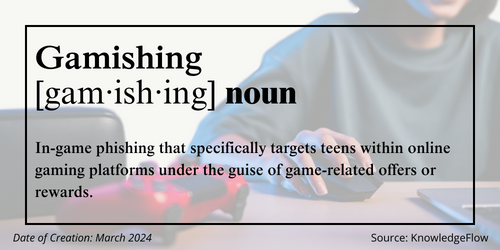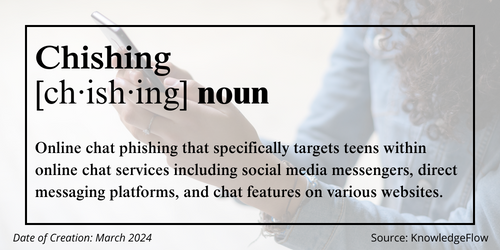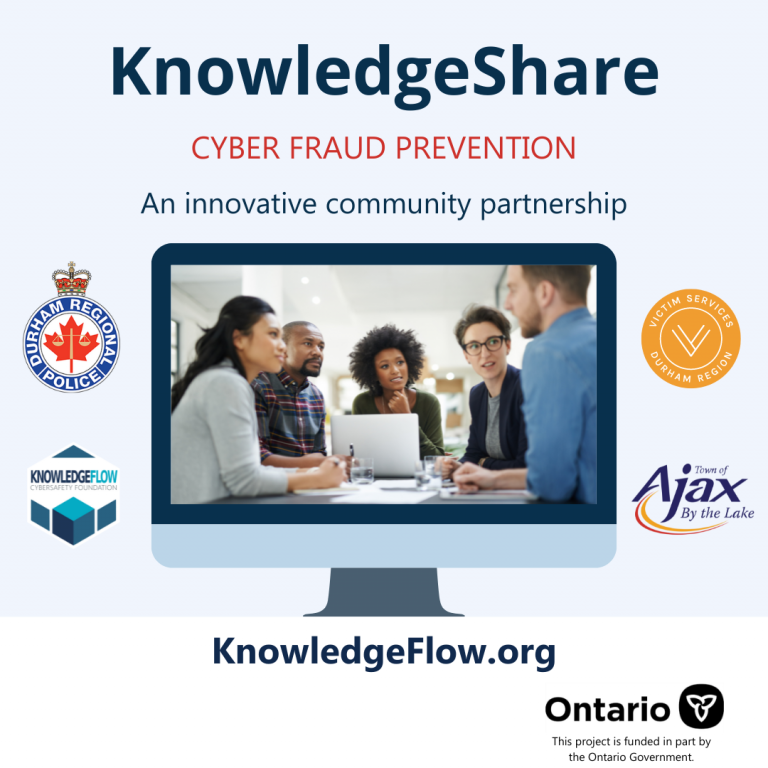Fraud Prevention Month: Two Lesser-Known Cybersafety Terms
Celebrating a Powerful New Vision for Teen Cybersafety
#FPM2024 is when the collective efforts to combat fraud take center stage, emphasizing the importance of vigilance, education, and community involvement in thwarting the efforts of scammers. At the heart of our mission, we recognize that fraud prevention isn’t just an annual campaign; it’s the very core of our endeavors. In this light, we are proud to introduce our latest initiative aimed at empowering the next generation with the tools and knowledge to navigate the digital world safely: “Charting Your Course: A Map from Cybersafety to Cybersecurity.”
Thank you to our project sponsors, CIRA and ICTC for their support in making this FREE course accessible to all Canadian teens. Their commitment to funding the creation and facilitation of this course is instrumental in bringing our vision to life.


empowering teenagers to recognize and avoid fraud
This innovative course is designed specifically for teenagers and written by certified cybersecurity experts, offering a comprehensive understanding of cybersafety best practices, including the skills to recognize and avoid scams. We are also reaching out to community nonprofits serving youth to discuss integration of this vital course into their teen programming. Collaboration is key to expanding our impact and ensuring that as many young people as possible can benefit from this essential education.
“Charting Your Course” will be available for individual registration on our Cybersafety Academy starting March 16. We invite parents, guardians, educators, and teens themselves to explore this opportunity to enhance their digital safety skills.
Two new cybersafety terms you should know
In an era where digital interaction is ubiquitous, scammers have found new avenues to exploit vulnerabilities. Recognizing this, we are introducing two new cybersafety terms: ‘gamishing‘—in-game phishing fraud, and ‘chishing‘—in-chat phishing, to categorize these insidious attempts that particularly target teens and youth. These terms are pioneering efforts to specifically denote the types of phishing scams infiltrating the games and chat platforms frequented by young individuals.
KnowledgeFlow Cybersecurity Dictionary
These definitions are crafted with the intent to shed light on the nuanced ways in which cybercriminals exploit the habits and trust of teenagers in digital environments, emphasizing KnowledgeFlow’s commitment to promoting cyber safety education for youth.

Gamishing (gam·ish·ing)
Date of Creation: March 2024
Definition: A cybersecurity threat that specifically targets teens within online gaming platforms, leveraging in-game messaging systems to perpetrate phishing scams. Gamishing combines “gaming” and “phishing,” highlighting the risk posed by attackers who exploit the immersive and social aspects of gaming to deceive young players. These scams often involve requests for personal information under the guise of game-related offers or rewards, and malicious links that may promise game enhancements but lead to data theft or account compromise. Teens, being particularly active and trusting in these digital spaces, are the prime targets of such deceptive practices, emphasizing the need for increased vigilance and education on digital security practices among younger gamers.
Source: KnowledgeFlow

Chishing (ch·ish·ing)
Date of Creation: March 2024
Definition: The technique of targeting teens through phishing scams conducted via online chat services, including social media messengers, direct messaging platforms, and chat features on various websites. Chishing—melding “chat” and “phishing”—underscores the scams that take place within the conversational flow of digital chats, where teens may not be on high alert for deceptive practices. Attackers often impersonate peers or authority figures to solicit personal or sensitive information, leveraging the informal and trusting nature of chat communications. The specific focus on teens is due to their high engagement with digital communication platforms and a general propensity to share information more freely, marking them as vulnerable targets for such sophisticated cyber threats.
Source: KnowledgeFlow
teenagers are becoming increasingly concerned about their personal cybersafety
Recent statistics highlight a troubling trend: teens are increasingly falling victim to traditional scams as well as sophisticated cyber threats. Source. In a recent study done in partnership between Microsoft and the National Cyber Security Alliance, teens report that they are “very concerned” about someone:
Engage, Educate, Empower
By raising awareness, sharing knowledge, and fostering a culture of digital vigilance, we can empower youth.
Join the conversation and spread the word using our hashtags: #CyberSafeYouth #FraudPrevention #Gamishing #Chishing #UnHackable
For more information and to register for the course, visit our Cybersafety Academy.
Join us in making Canadians #UnHackable.







